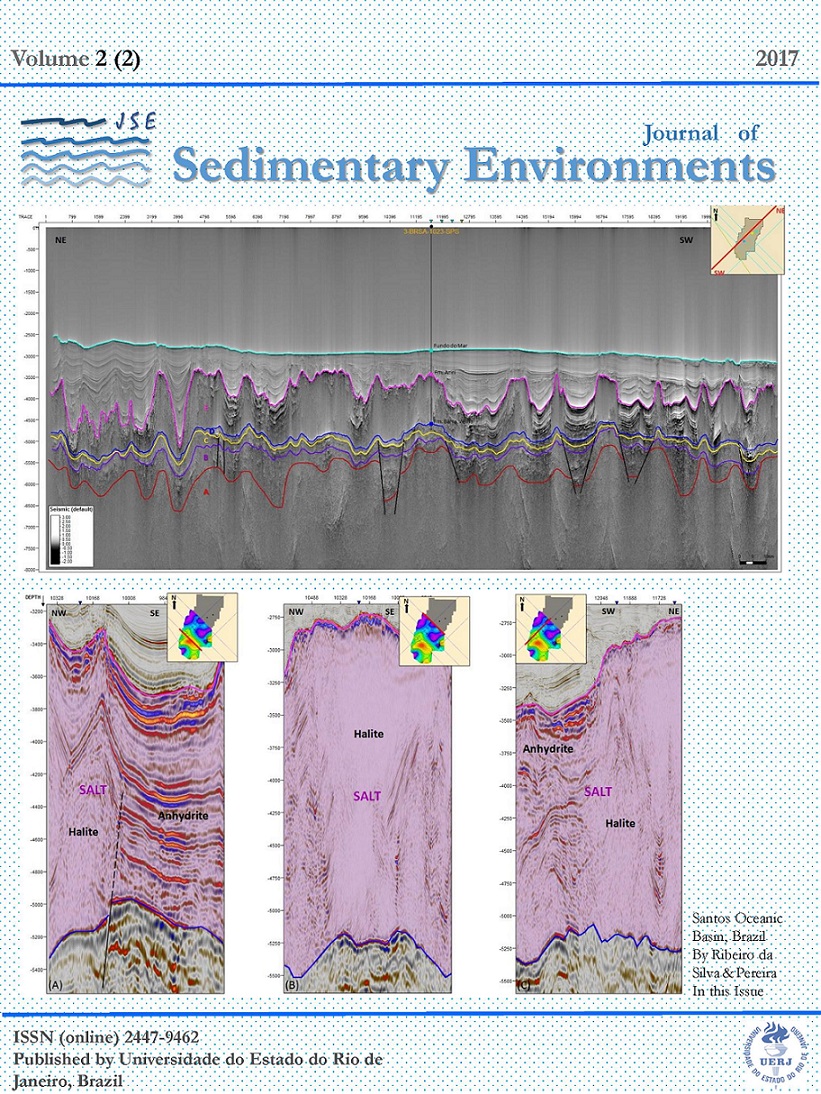SEDIMENTS QUALITY AND POTENTIAL USES OF DREDGED MATERIAL: A CASE STUDY (PORTUGAL)
DOI:
https://doi.org/10.12957/jse.2017.29215Keywords:
Harbor dredging. Sediments. Quality of dredged material. Application of dredged material. Contamination. Coastal area.Abstract
This work intends to access the sediments quality and to suggest potential uses of dredged material off the mouth of Figueira da Foz Harbor (FFH; Portugal), at a frequently dredge area in order to keep port accessibility. Thirty-six sediment samples collected at an area of about 4 km2 were submitted to textural, mineralogical (X-Ray Diffraction techniques) and geochemical (ICP-MS) analyses.
Results evidenced that bottom sediments in the study area are composed mainly of sand. Fine fraction increases with distance to the FFH mouth. The mineralogical and geochemical analyses performed in 14 samples (with enough fine fraction for both analyses) indicate that the sediments sources are mostly related to the littoral drift and Mondego River, which flows into the region.
Preliminary results of this work indicate that in general the sediments are clean, which allows the disposal of the dredged materials without restrictions, for instance, in the aquatic environment or beach nourishment. However, an enrichment of Cd was observed in few stations, probably related to anthropogenic sources of pollution. Cadmium in high concentrations can provoke environmental problems. It has biomagnification effect and is a potential carcinogen for humans. According to Portuguese regulation sediments collected, in the stations FF1, FF13, FF24 and FF33, contaminated dredged materials (Class 4) can be dumped on land, in a waterproofed place; and, in the station FF18, corresponding to highly contaminated dredged materials (Class 5) should be sent for prior treatment and/or dump of duly authorized waste, being forbidden their immersion. However, more detailed analyses and subsequent on-site monitoring studies should be required to achieve conclusive results and to analyse the persistence of pollutants in this region.
Downloads
Published
Issue
Section
License

Journal of Sedimentary Environments (JSE) is licensed under a Creative Commons Attribution-Noncommercial-Share Alike 4.0 International License.

